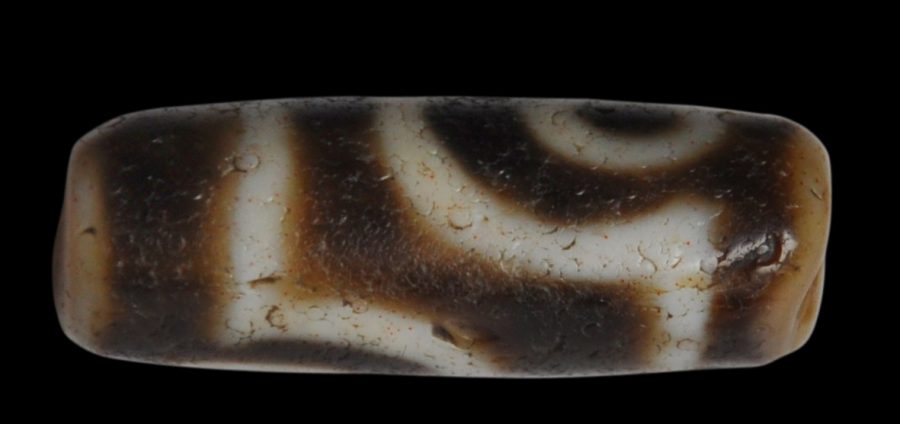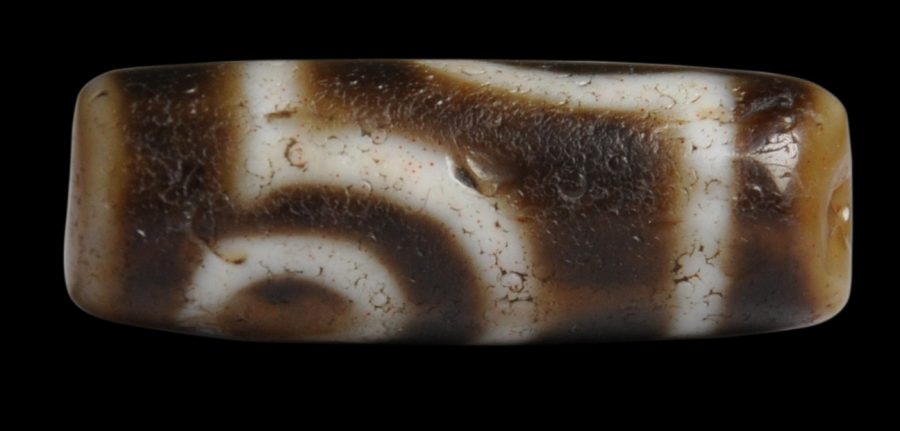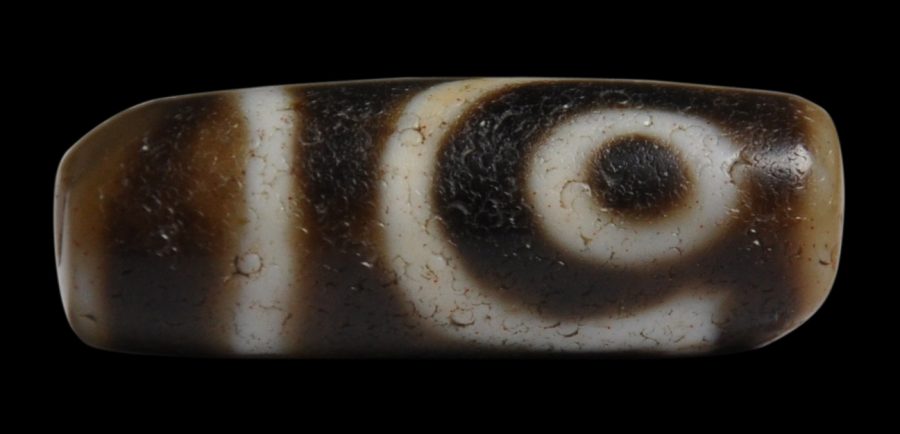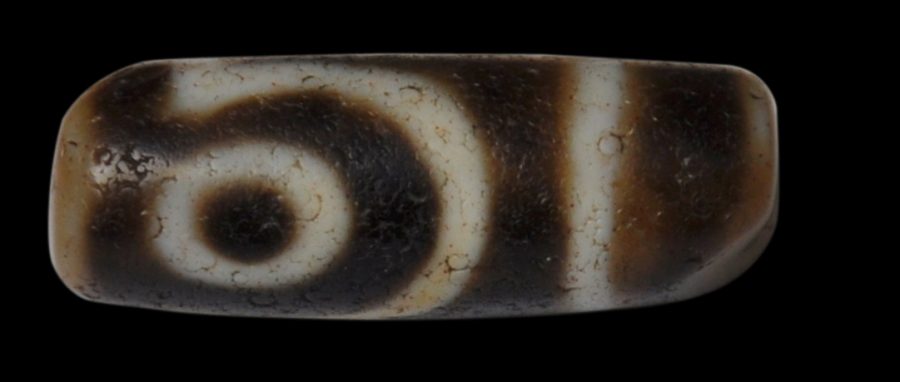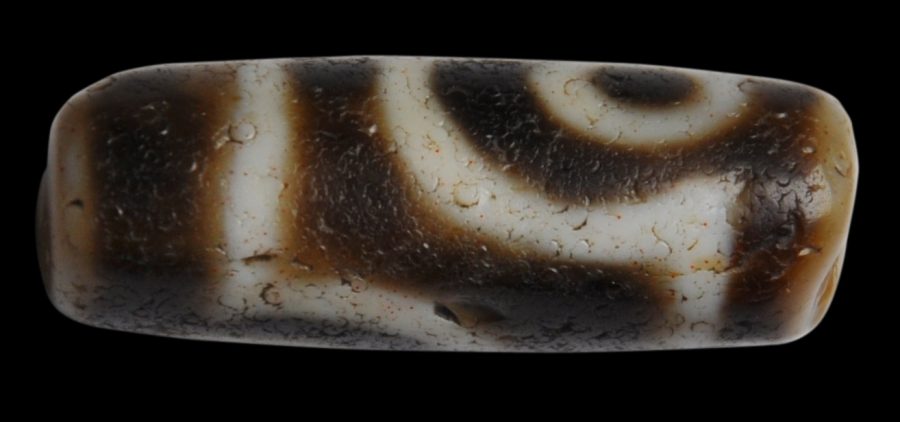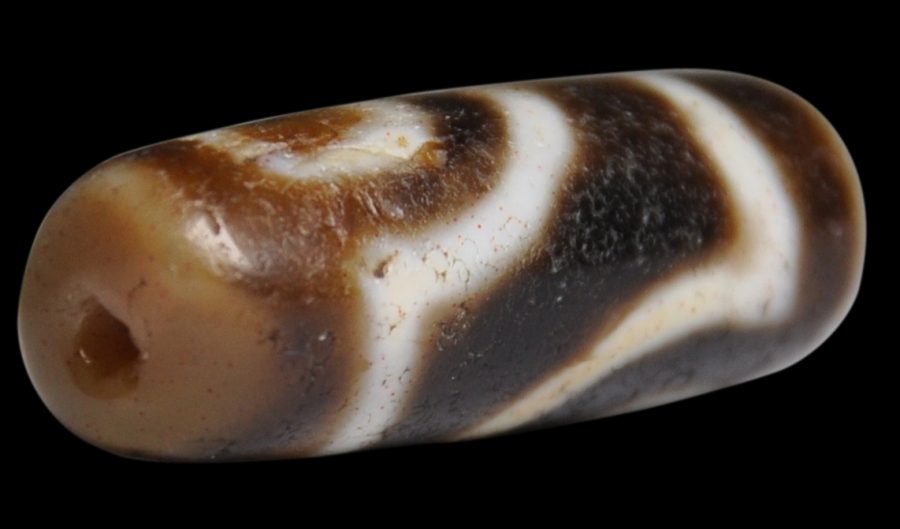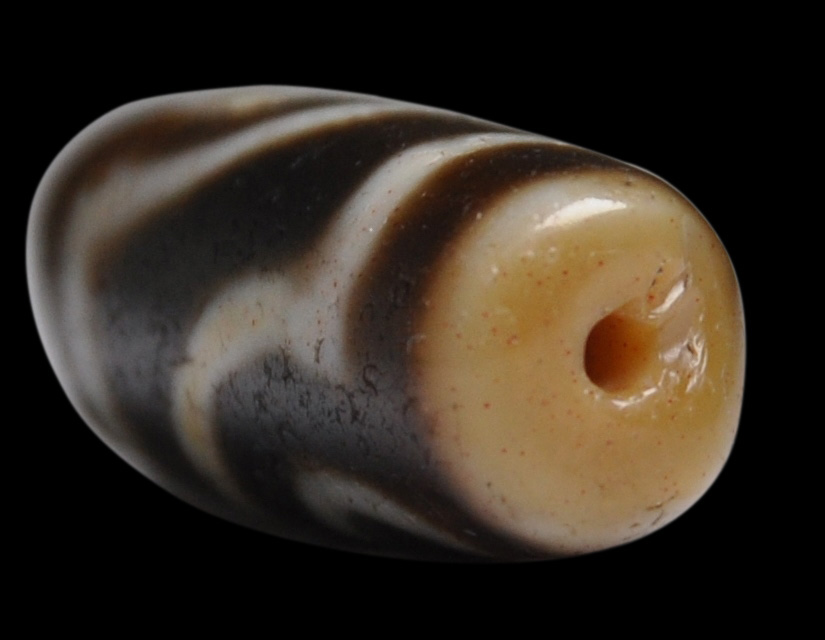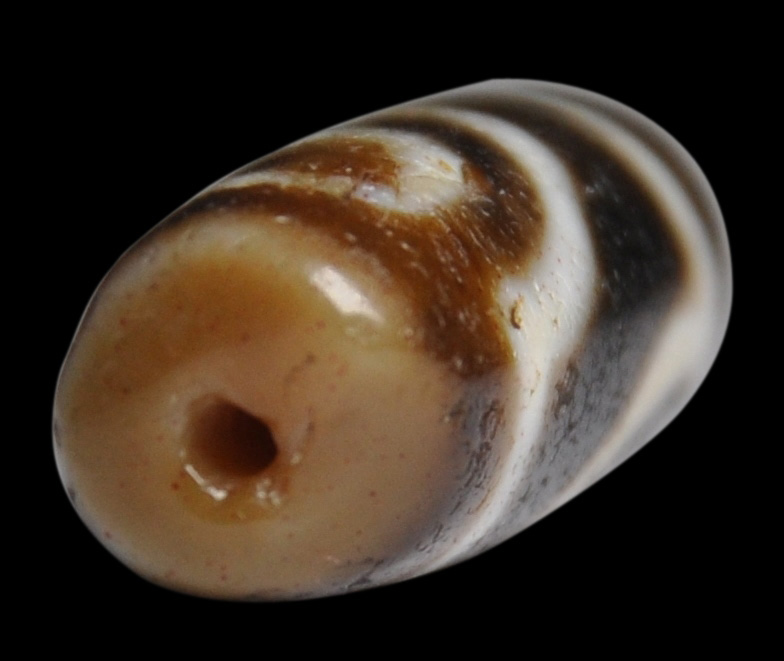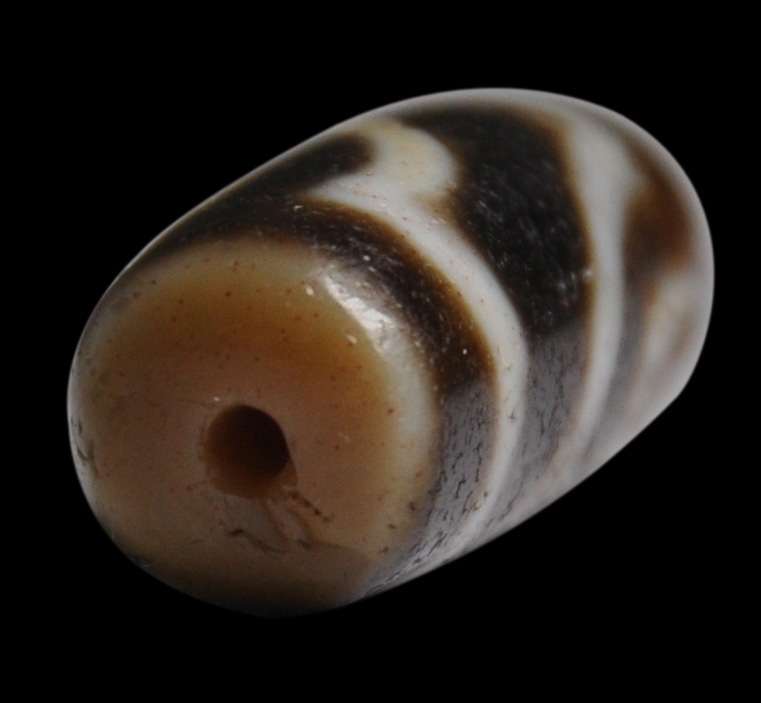This fine dzi bead is of unquestionable authenticity. It is from an old English collection and originally was presented by a senior Bhutanese figure. (Members of the Bhutan royal family and other senior Bhutanese wore and still wear old dzi beads just as Tibetans did and do.)
It is ancient, of tapering, barrel-form, and of dark-brown agate that has had designs etched into it – two ‘eyes’ within rounded frames. The time and place of manufacture is a mystery. Tibetans and other Himalayan people valued the beads highly, and some regarded the beads as having supernatural origins: they had either fallen to earth being dropped by sky gods or were created within the earth. It is unlikely that he beads were made in Tibet itself and possibly came from Persia, India, or Burma during ancient times.
The example here has all the signs expected of a high quality ‘pure’ dzi: it is well-weathered, has several medicine ‘dig’ marks which themselves have developed patina, and the ends have multiple tiny cinnabar spots.
Dzi beads are prized as protective amulets. The ‘dig’ marks are where tiny bits have been gouged out over the centuries for grinding up for inclusion in a traditional Tibetan medicine.
The ends of this example have been rounded and worn at an angle. This is likely to have come from the bead having been used as a burnishing tool for the application of gold leaf to thanka paintings or gilt bronze statuary. (The use of agate in such a process has parallels elsewhere – interestingly, Rooney [2017, p. 62] writes that in China, gilding on porcelain often fired with small areas of flaking and this was restored by moistening the porcelain with water and rubbing the gilding with an agate to ‘stretch’ the gilding over the area of loss.)
The hole drilled through the centre of the bead is uneven as might be hoped for, and it has wear and is generally misshapen from centuries of being rubbed by a cord. New beads are machine-drilled and the holes in them typically are straight and uniform. Dzi beads are believed to protect their wearers. When a bead spontaneously breaks then it is believed to have served its purpose – it has absorbed danger and broken as a consequence. The beads have become so valuable that few Tibetans own more than a few beads and are wary of wearing them openly for fear of theft.

A young Tibetan noble woman wearing necklaces that include multiple dzi beads (Lhasa, early 20th century).
References
Allen, J., ‘Tibetan zi beads’, in Arts of Asia, July-August 2002.
The Heart of a Sacred Kingdom – Her Majesty the Royal Grandmother Ashi Kesang Choeden Wangchuck: A Lifetime of Service to the People and Kingdom of Bhutan, Gatshel Publishing, 2017.
Rooney, D., Bencharong: Chinese Porcelain for Siam, River Books, 2017.


